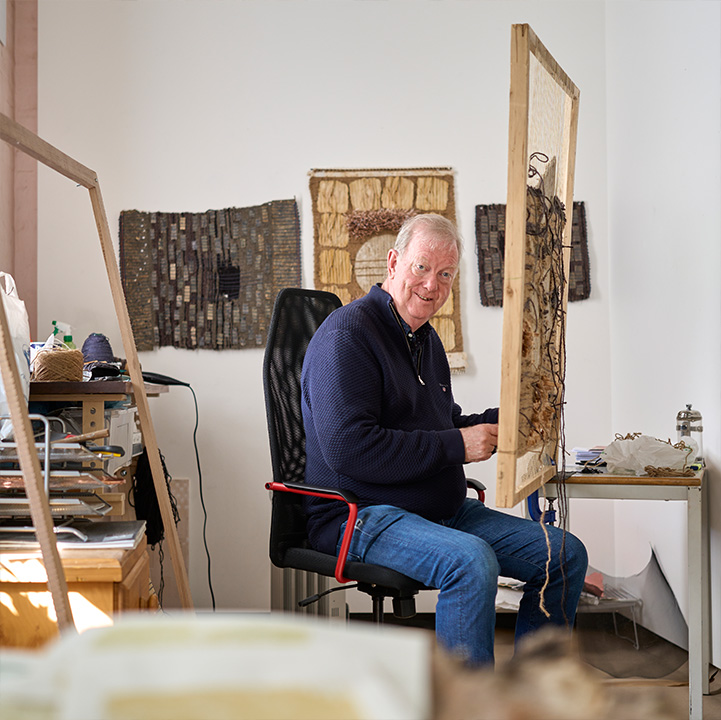Offering undergraduate and honours degrees in visual art, Adelaide Central School of Art is nurturing the next generation(s) of contemporary and prize-winning artists.
Studying visual art by degrees
Advertising industry veteran creative Tony Busch was semi-retired when he enrolled in the Bachelor of Visual Art at Adelaide Central School of Art five years ago. Now aged 72 and studying full-time for his Honours degree, he’s found his (happy) medium.
While Tony has dabbled in painting for 15 years, late into the second year of his studies he started making paper, sculpting and weaving with it. His graduate exhibition pieces featured a combination of handmade and woven fibre.
“This year, I’ve left the paper alone and concentrated on the weaving,” Tony says, “because it’s become far more satisfying.”
Exploring the artform and inspired by fibre artists such as Magdalena Abakanowicz, he’s largely self-taught and works on home-made looms spanning up to 3.5 metres by 2 metres. He says he is, however, a beneficiary of the “exceptional” skills, support and guidance of the lecturers, all of whom are practising artists.
Applications for Semester 1, 2024 are now open.
Learn more at the website.
“A lot of the [study] here is definitely self-motivated,” he says. “But the provision of signposts and mechanical information that’s provided for you, give you an opportunity to develop in unexpected ways.”

Tony Busch, student at Adelaide Central School of Art.
The Adelaide Central School of Art (ACSA) has a considerable reputation within fine art education and has been recognised as the best art school in Australia based on the student experience. Recent graduates include 2023 Ramsay Art Prize winner Ida Sophia and Inneke Taal, who won a 2023 Anne & Gordon Samstag International Visual Arts Scholarship.
Undergraduate students often transfer from other tertiary institutions to ACSA to do their Honours degree and the school also takes students without a degree – the competitive application process is proof enough of talent.
ACSA academic director Monte Masi says, with just over 200 students enrolled in the degree program and the school’s singular focus on fine arts, its lecturers are able to provide more tailored teaching for each student.
“As well, we have some really good structures around one on one academic support, including essay writing support and peer mentoring,” Monte says.
ACSA also has an active student association that hosts events and runs its own exhibition programming.
In Tony’s cohort, fellow Honours student and sculptor Tahlia Hieatt says “the whole vibe of the school is just so lovely, warm and welcoming” and that it feels like her second home.
Now looking to maintain a studio practice or an artist residency after she graduates, Tahlia was fresh out of high school when she started at ACSA.
“I assumed that if you were to do art, you had to be an art teacher,” Tahlia says. “I didn’t realise that you could be an artist and have this whole practice and win prize money and grants.”
While the Bachelor of Visual Art’s focus is on making art and contemporary studio practice, Tahlia says being introduced to the art scene via gallery tours and meeting established contemporary artists was invaluable.
“The great thing about the school is [the lecturers and former students] know a lot of other people,” she says. “When you start socialising, you can be introduced to other artists, which helps you get out there.”
This sense of community, Monte says, is a hallmark of ACSA. He wants to extend it further by refurbishing an unoccupied building on the Glenside campus into studio spaces for artists from outside the school to use. Doing this will also provide students with new opportunities for engaging with artists. Plans have been drawn up, but the $4 million still needs to be found.
For graduates, Monte hopes they’ll feel equipped to understand the gallery and museum sector and to make “some fantastic looking artworks”.
“I also hope that students feel like they know how to live a life with art [and] have a good understanding of the context under which they might show and share their work.”




